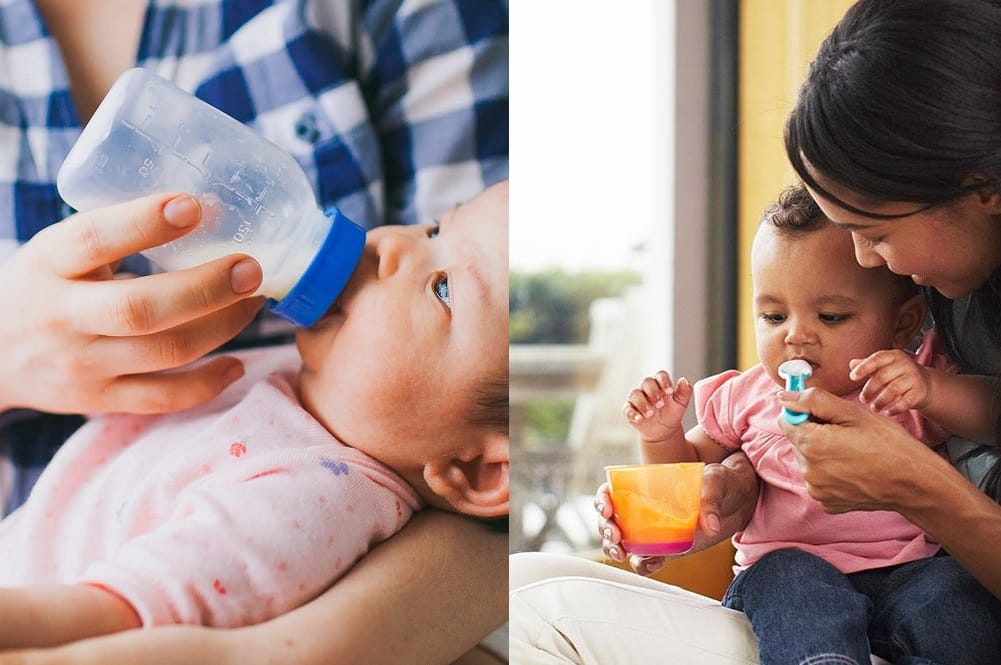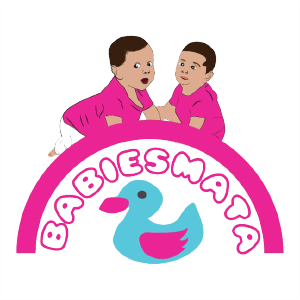Spoon feeding versus bottle-feeding

Apart from breastfeeding a baby, you can spoon-feed or bottle feed the baby. All these have to do with age. As a child grows, it gets to a stage whereby other foods will be consumed alongside breast milk. At this stage, you\’ll determine what to feed the baby with, either spoon or bottle.
Some kids are even funny and can be selective. They tend to decide which one best suit them in the process of feeding them. The mother must now observe the child well and know which kind of feeding the baby likes well—one without any health challenge. No mother will be happy seeing her child, not eating. This usually gets them worried a lot.
You can feed a baby in two ways, spoon-feed or bottle feed. No matter the feeding method, it must be in the right nutrition, free from contaminants, and healthy for the baby.
Spoon feeding
Spoon feeding is simply the act of feeding a child with the use of a spoon. What makes the food to the child\’s mouth is with the aid of a spoon. Whether solid or liquid diet, a spoon can be used. The child can be left to use the spoon alone or assisted by the mother.
Advantages of spoon-feeding
1. Spoon feeding has been in existence since time immemorial. It has shown to help babies develop proper motor skills as well as good eating habits. Hand-eye and hand-mouth coordination, taking food from the spoon, and moving it to the mouth for chewing and swallowing are skills learned through spoon-feeding.
2. It helps babies develop a healthy relationship with food. Your baby needs to get used to all eating processes like sitting up, taking food from the spoon, resting between bites, and stopping when full. These are early eating experiences needed to help your child learn good eating habits all through his or her life.
3. It embraces sensory development. Spoon feeding is essential as it helps the baby to create a positive relationship with food. The baby can see, smell, and touch the food. The baby can also choose whether to eat or not.
4. It offers opportunities for various food textures. With the use of a spoon, the baby is either fed with smooth, crunchy, thin, or thick food. This broadens their palate and prepares them for table foods.
5. Spoon feeding encourages healthy mealtime habits with the family. During the process of eating at the dinner table with the family while everyone is seated, talks and eye contact can be made during the meal. This helps the baby to develop their social and language skills.
6. It does not lead to choking. The baby takes little food at a time, especially that which can be consumed once.
7. It is a clean feeding habit, and it enables you to know the quantity of food your baby has eaten.
Disadvantages of spoon-feeding
1. It is easy to overfeed the baby
2. The feeding may be time-consuming if you have other things to attend to at that moment
3. It can be expensive if you are purchasing jars of baby food or purees
Bottle feeding
Bottle feeding is simply the use of feeding equipment like a bottle, artificial nipple, and formula to feed an infant. It is usually considered an alternative to breastfeeding. It may occur when breastfeeding is no longer comfortable for the mother or when you are about to wean the child. As there are advantages to bottle feeding, so lies the disadvantages. All these must be known before you can conclude whether or not you will practice this feeding formula.
Advantages of bottle-feeding
1. Anyone can feed the baby. Whether parents, siblings, families, or friends can feed the baby. This allows for bonding with the baby because more time is spent with the baby.
2. Feeding can be done in public. Unlike breastfeeding, the mother might not want to expose her breasts or spoon-feeding, which might not be too comfortable outside. Bottle feeding is a different thing. It can be practiced anywhere at any time.
3. It allows you to know the amount of intake by your baby. Using a bottle can allow you to have a measure of what your baby consumes, unlike breast milk.
4. It helps babies with lactose intolerance. If a baby cannot process breast milk, using a bottle to feed the baby with milk formula is possible.
5. The baby is unaffected by the mother\’s health. If the mother is sick, bottle feeding can be encouraged. It doesn\’t allow the mother\’s health condition to transfer to the baby as a result of breastfeeding.
Disadvantages of bottle-feeding
1. Your baby might reject bottle feeding as well as formula.
2. Bottle feeding can be inconvenient and stressful. You may be required to get up and prepare formula anytime your baby is hungry, even if it\’s midnight. You will always have to carry a bottle, and formula around any time you\’re traveling.
3. It may affect the mother-baby bond. When the baby sucks the breast, skin to skin contact is established. Feeding is a bonding moment for mother and child, and bottle feeding may hamper it.
4. Bottle feeding equipment might be expensive at times. To feed your child with a bottle, you need to get clean and uncontaminated bottle equipment that will not affect the baby\’s health. You may have to invest in a good quality breast pump, feeding bottle, cleaning brush, sterilizer, etc. All these can be an added expense.
5. There may be a high risk of infection as microorganisms may stick to the teat of the bottle. This can transmit the disease to the baby with the use of such a bottle.
Similarities between spoon-feeding and bottle feeding
- Both are methods of feeding a baby
- They can be learned and practiced by any mother
Spoon feeding versus bottle-feeding
- Bottle feeding is more comfortable for babies than spoon-feeding because the bottle is easier to carry compared to spoon
- Bottles satisfy baby hunger completely while there might be a lot of wastage with a spoon
- Bottle feeding is more hygienic because the bottle is completely closed as opposed to spoon-feeding
- A baby might get too addicted to bottle and may not want to learn spoon
- Spoon feeding doesn\’t require thorough washing at all times, but the bottle does
- The bottle is more prone to microorganism contamination whereas spoon does not







